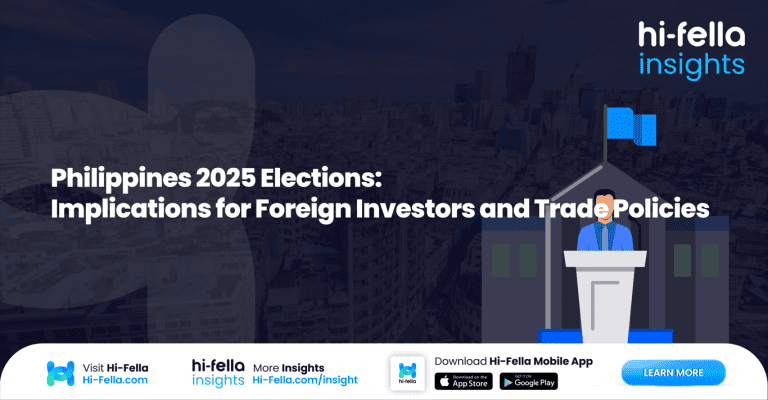Once upon a time, trade shows meant hauling banners, brochures, and business cards across cities (or even continents). Enter the digital age, and suddenly, you can showcase your business, network with industry leaders, and generate leads—all without leaving your desk. So, are virtual exhibitions the future, or just a pandemic-era trend that will fade away? Let’s dive into the power of digital trade shows and why they might just be here to stay.
The Rise of Virtual Exhibitions: Why Businesses Are Going Digital
The business world has undergone a digital revolution, and trade shows are no exception. What started as a necessity during global lockdowns has now transformed into a new norm for many industries. But why are businesses embracing virtual exhibitions?
The Cost Efficiency Advantage
While reducing travel, accommodation, and booth setup costs is a clear advantage, the real financial win comes from the redistribution of resources. Companies that previously spent hundreds of thousands on physical events are now reallocating budgets to digital marketing, AI-driven matchmaking, and interactive engagement tools.
Example: A company that previously spent $50,000 on an international trade show (booth rental, travel, marketing materials) can now host multiple virtual exhibitions for a fraction of the cost while reaching an even larger audience.
Beyond savings, virtual trade shows offer better ROI tracking, as businesses can directly measure lead conversions from digital interactions—something far harder to quantify at a physical event.
Expanding Markets Without Borders
Physical trade shows inherently limit participation to those who can afford the time and cost of travel. Virtual exhibitions remove that barrier, opening the doors to emerging markets, small businesses, and attendees who would never have been able to participate otherwise.
Key impact: Businesses can now test interest in new markets without heavy investment. Before launching a product in Europe or Asia, companies can soft-launch at international virtual trade fairs and gauge demand.
For exhibitors: A company based in the U.S. can network with buyers in India, manufacturers in China, and distributors in Brazil—all within a single event.
For attendees: Small businesses that couldn’t afford to send a representative to major expos can now attend virtually, making industry connections and exploring new suppliers.
Virtual exhibitions democratize access to global business opportunities—an essential factor in today’s interconnected economy.
Increased Accessibility
Traditional trade shows are often gatekept by cost and logistics, favoring well-funded companies with large teams. Virtual events level the playing field.
- Startups and small businesses can now participate in major industry expos without massive budgets.
- Professionals with disabilities who might struggle with travel can now engage fully online.
- Time-sensitive attendees who can’t dedicate full days to an event can attend sessions on demand.
Example: A niche food-tech startup from Indonesia might struggle to afford an exhibition booth at a global food expo in Paris. But with virtual exhibitions, they can present their products, connect with distributors, and even secure deals—all without flying across continents.
This lowered barrier to entry accelerates innovation and diversity in industries, allowing smaller players to get noticed alongside established giants.
Data-Driven Insights: The Competitive Edge
One of the biggest advantages of virtual exhibitions is the real-time data and analytics that come with them. Unlike physical events, where tracking visitor interest is tricky, virtual platforms offer detailed insights into every interaction.
Data insights available at virtual trade shows:
- Visitor engagement (time spent at booths, content viewed)
- Lead scoring (AI-powered analysis of high-intent visitors)
- Networking behavior (who engaged with whom, for how long)
- Post-event follow-ups (automated CRM integrations for better lead conversion)
Why this matters:
- Higher lead conversion rates because businesses can focus on engaged prospects.
- Smarter marketing strategies driven by data rather than guesswork.
- More personalized outreach since companies can see what specific products/services attendees showed interest in.
Example: At a physical trade show, a booth staffer might talk to 500 visitors in a day but remember only 50 meaningful conversations. In a virtual exhibition, AI captures every touchpoint, ensuring no opportunity is lost.
The Psychological Shift in Business Networking
For decades, business networking was rooted in face-to-face interactions, handshakes, and in-person rapport-building. Virtual exhibitions require a shift in approach:
- More structured interactions – Instead of aimlessly wandering trade show floors, attendees engage in pre-scheduled meetings, AI-driven matchmaking, and curated networking sessions.
- Stronger follow-up culture – Digital connections often lead to faster, more structured follow-ups via email, LinkedIn, or video calls.
- Hybrid strategies – Many companies now blend physical and virtual strategies, attending a few in-person events while maximizing digital exposure year-round.
Case study: A B2B software company that relied on traditional trade shows for networking expanded its lead pipeline by 40% after incorporating virtual exhibitions into its strategy, proving that digital-first approaches can be even more effective than face-to-face events.
The Future of Trade Shows: Is Virtual the New Standard?
With businesses saving money, reaching wider audiences, and leveraging data-driven strategies, virtual trade shows aren’t just a temporary solution—they’re a strategic evolution.
However, hybrid models will likely dominate the future. While nothing replaces face-to-face deal-making, the convenience, inclusivity, and efficiency of virtual exhibitions make them an essential part of modern business strategies.
What’s Next?
- More immersive virtual experiences – Think VR-based trade shows where attendees can “walk” through booths.
- AI-powered networking – Smarter matchmaking and automated follow-ups.
- Blockchain for verification – Ensuring attendee legitimacy and fraud prevention in digital expos.
The future of trade shows is here—and it’s no longer confined to convention centers.
How Virtual Trade Shows Work
Virtual exhibitions mirror physical trade shows, but in a digital format. Here’s how they typically function:
1. Virtual Booths
Exhibitors set up digital booths featuring interactive elements such as videos, product demos, and live chat options.
2. Live Webinars & Panels
Industry leaders can host real-time discussions, Q&A sessions, and keynote presentations, often with global audiences.
3. AI-Powered Networking
Many platforms use artificial intelligence to match attendees with relevant exhibitors based on interests and business needs.
4. On-Demand Content
Unlike physical events, digital trade shows allow visitors to access recorded sessions and materials long after the event has ended.
5. Instant Lead Capture
Attendees can express interest in products with a simple click, making lead collection seamless and efficient.
The Best Platforms for Digital Trade Shows
Several platforms are leading the way in virtual trade show technology. Here are a few that are making waves:
- Hopin – A fully immersive platform offering networking, expos, and live sessions.
- vFairs – Great for large-scale expos with 3D virtual booths and engaging environments.
- Brella – A networking-focused platform that uses AI matchmaking for B2B connections.
- InEvent – Ideal for corporate virtual conferences and exhibitions.
- Swapcard – Blends AI-powered networking with robust exhibitor options.
Each platform brings unique features to the table, so choosing the right one depends on the goals of your virtual event.
Are Virtual Trade Shows as Effective as Physical Ones?
This is the million-dollar question. While virtual trade shows offer convenience and efficiency, they also have limitations:
Pros of Virtual Trade Shows
✔ Lower Costs – No travel, accommodation, or shipping fees.
✔ Wider Audience – No geographical restrictions.
✔ Data & Analytics – Detailed insights into visitor engagement.
✔ Environmentally Friendly – No carbon footprint from travel and logistics.
Cons of Virtual Trade Shows
❌ Lack of Face-to-Face Interaction – Digital networking can feel less personal.
❌ Tech Glitches – Connectivity issues and platform limitations can disrupt experiences. ❌ Screen Fatigue – Attendees may disengage after long hours in front of a screen.
Despite these drawbacks, many businesses are finding ways to maximize virtual trade show effectiveness through engaging content, gamification, and hybrid event models.
The Future of Trade Shows: A Hybrid Approach?
While virtual trade shows have undeniable advantages, physical events still hold value for relationship-building and hands-on experiences. The most likely future? A hybrid model combining the best of both worlds.
- In-Person Events with Virtual Components – Physical expos with live-streamed keynotes and digital networking rooms.
- On-Demand Access to Sessions – Recorded talks available post-event for broader reach.
- Virtual Booth Extensions – Exhibitors maintain an online presence for post-event engagement.
Should You Embrace Virtual Exhibitions?
Virtual trade shows aren’t just a pandemic trend—they’re a game-changer for businesses looking to expand their reach without the traditional logistical hassles. Whether you go fully virtual or adopt a hybrid approach, the key is to leverage the technology available to create meaningful, high-value interactions.
So, are you ready to step into the future of trade shows—without leaving your desk?






